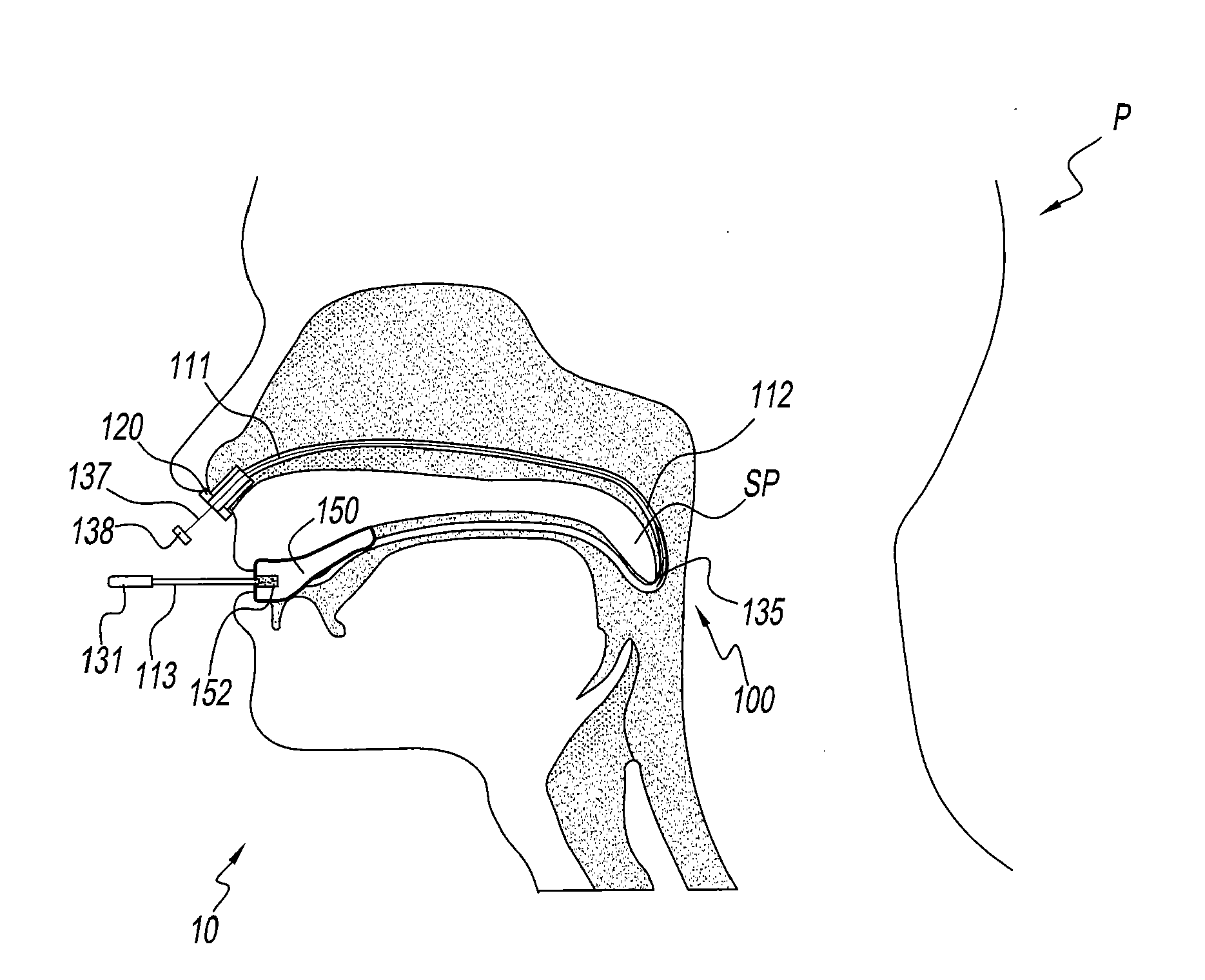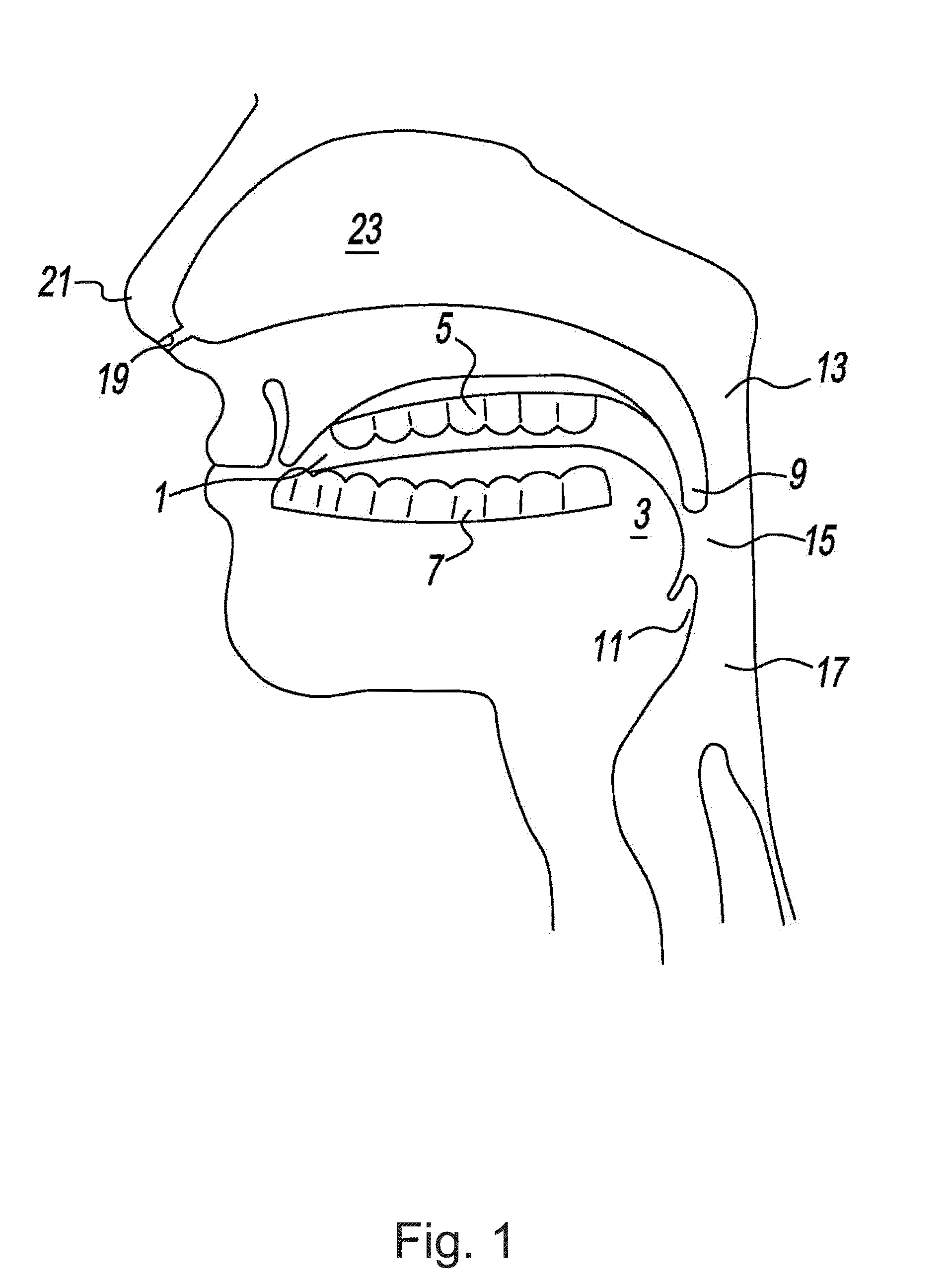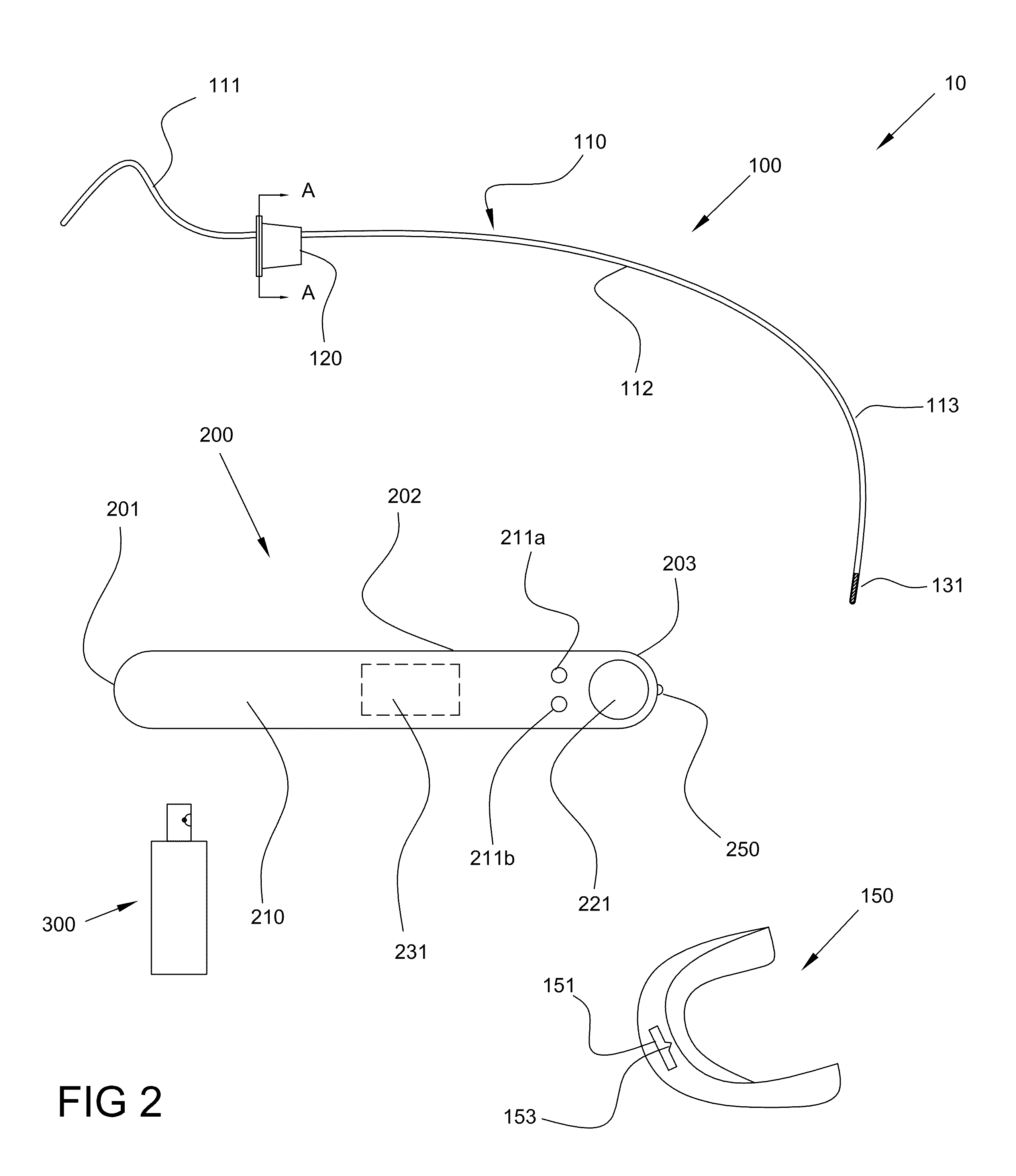Those afflicted with obstructive
sleep apnea experience sleep fragmentation and intermittent, complete or nearly complete cessation of ventilation during sleep with potentially severe degrees of oxyhemoglobin unsaturation.
Hypersomnolent sleep
apnea patients may be at risk for excessive mortality from these factors as well as from an elevated risk for accidents such as while driving or operating other potentially dangerous equipment.
Such abnormalities may include narrowing of the upper
airway due to suction forces evolved during inspiration, the effect of gravity pulling the tongue back to obstruct the
pharyngeal wall, and / or insufficient
muscle tone in the upper airway
dilator muscles.
As air is inspired, the tongue and posterior walls of the
pharynx collapse, causing snoring or, more seriously, partial or complete obstruction of the airway.
The ongoing force of inspiration serves to generate increasingly negative pressure within the
pharynx, causing further collapse.
Not surprisingly, sleep is extremely fragmented and of
poor quality in persons suffering from sleep
apnea.
As a result, such persons typically feel tired upon wakening and may fall asleep at inappropriate times during the day.
All aspects of
quality of life, from physical and emotional health, to social functioning are impaired by obstructive sleep apnea.
These treatments constitute major undertakings with considerable risk of post-operative mortality.
However, UPPP does not always fix a sagging
soft palate nor does it address apnea caused by obstructions caused by the base of the tongue being deeper in the oropharynx region of the airway.
These surgical techniques are extremely invasive, requiring general
anesthesia, and a prolonged, painful
recovery.
LAUP, or
Laser-Assisted Uvulopalatoplasty, is a modification of the above-mentioned technique, but has had mixed success and cannot solve obstructions behind the base of the tongue.
More than one session is typically required, and other surgeries may still be necessary in
moderate to severe cases, and there are occasional problems with morbidity.
The methods of Conrad et al. are specifically designed to reduce the audibility of snoring but do not address the more serious condition of sleep apnea.
These conventional treatments continue to suffer poor or partial cure rates.
The failures lie in their inability to maintain patency in the retropalatal region and retroglossal region (the caudal margin of the
soft palate to the base of the
epiglottis).
The poor success rates combined with
high morbidity from some of the
surgical interventions, contribute to an ongoing need for more effective treatments for sleep apnea and / or snoring.
In addition, side effects from the pharmacological agents that have been used are frequent.
These current oral devices typically do not create a significant improvement except in mild to moderate cases and can be associated with movement of the teeth over time causing problems with the
temporomandibular joint.
Although CPAP has been found to be very effective and well accepted, it suffers from some of the same limitations, although to a lesser degree, as do the surgical options; specifically, a significant proportion of sleep apnea patients do not tolerate CPAP well.
While CPAP therapy has had significant success in reducing or eliminating apneas through the delivery of air under pressure,
CPAP treatment suffers from patient non-compliance and cannot be tolerated by an ample minority of patients.
Therefore, there remains a relatively large number of patients whose airway disorder is believed to be treatable using an intraoral appliance, yet conventional appliances are ineffective, overly burdensome, uncomfortable, or any combination thereof.
 Login to View More
Login to View More  Login to View More
Login to View More 


